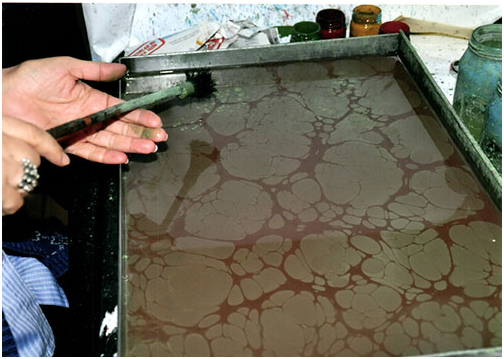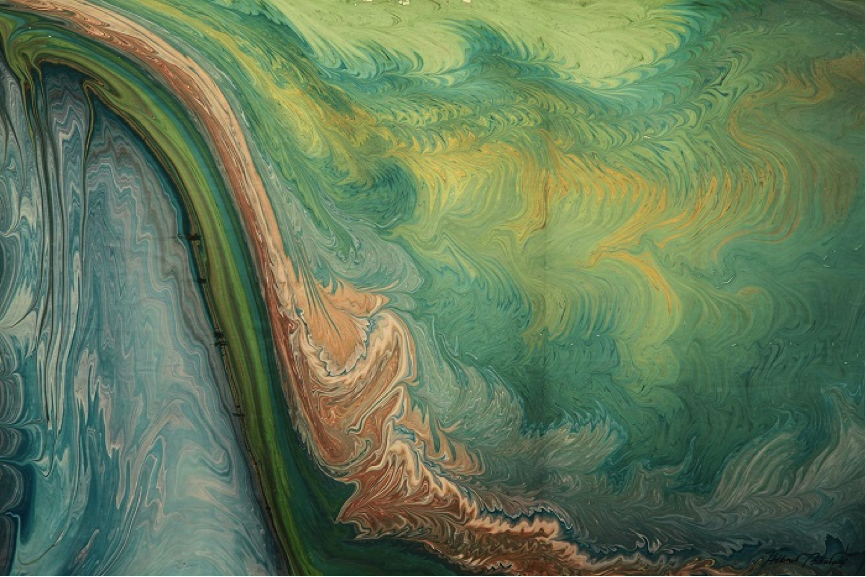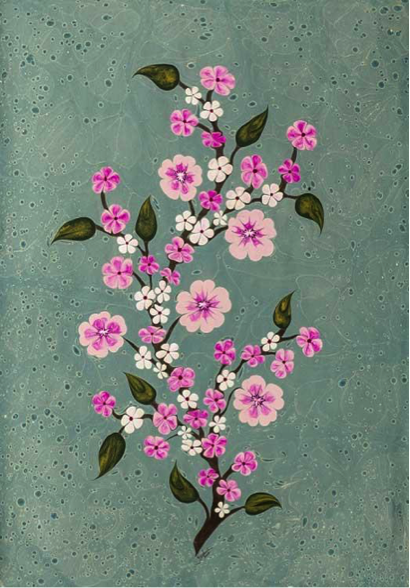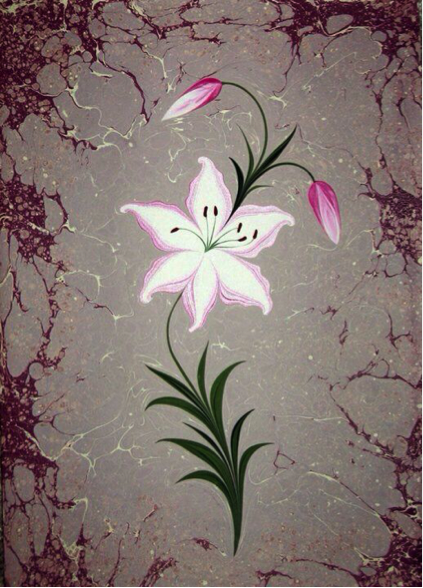Style
Ebru Art (Marbling)
The Art of Ebru is a traditional art made by transferring the patterns created with paints on the water, which is prepared with its own techniques and taken into the boat, onto the paper. Ebru has become a traditional art in the historical process as the art of book decoration and the side paper (the paper that connects the cover and the book) in book bindings.
The first examples of Ebru were seen in Central Asia in the 13th century, and the Turks learned this art from the Uzbeks in the 14th century. In the following process, the Uzbeks forgot this art and Ebru has survived as a Turkish art until today. During the Ottoman period, Turkish calligraphers and artists created new forms and improved their techniques. Although the art of Ebru was learned secretly by the Italians in the 17th century, Italian marbling did not develop in a figurative style, but continued to be made only in a style called ground Ebru in Turkish Ebru.

The art of Ebru has its own material and application features. All materials and tools used in traditional Ebru art are prepared by ebruzen. All of the dyes are obtained from nature by natural methods. Tragacanth, which provides the condensation of water, is a vegetable-based main material. The natural acid that allows the dyes to open on the tragacanth is also the bile in the animal’s gallbladder. The name given to the container in which the art of Ebru is performed is the boat. First of all, the ground Ebru by brushing the paint on the water condensed with tragacanth in the boat; Then, with the help of us and similar tools, flowers or other patterns are created. When the pattern is ready, paper is laid on the boat. When the laid paper is removed, it is seen that all the patterns on the water pass onto the paper. That’s why every Ebru is unique and cannot be repeated.
Many special types of Ebru have developed over the centuries, such as battal, tide, combed, orator, nightingale, flowered. Today, although Ebru is done in a modern style besides the traditional, the most common Ebru types are flower Ebru such as tulip, carnation, rose, violet and daisy.

Courses and workshops offered by many institutions, non-governmental organizations, local governments and masters have special importance in terms of transferring the tradition to new generations. These courses respond to the growing interest in the art of Ebru across the country.
Different geographies, cultures, individuals and their experiences contribute to the development of the art of Ebru. Ebru; Each work is unique and cannot be produced the same way twice, as it is formed by the combination of water representing the source of life, paints representing the dance of colors and the artist’s feelings. Every little drop of paint gives the artist many options, allowing a masterpiece to emerge.
The oldest known marbling artist of the Republican era is Mustafa Düzgünman (1920-1990). In the last quarter of the 19th century, very valuable ebruzens who left their mark on today’s Turkish Ebru were trained. Fuat Başar, Mahmut Pesteli, Timuçin Tanarslan, Hikmet Barutçugil and Firdevs Çalkanoğlu are some of them.
The technique developed by the world-famous Ebru artist Hikmet Barutçugil has entered the world literature under the name Barut Ebru.

Another famous Ebru artist, Firdevs Çalkanoğlu, is known for bringing almost all flowers to the art of marbling, except the traditional ones.


Ebru: Turkish Paper Decoration Art has been registered on the UNESCO Intangible Cultural Heritage of Humanity List on behalf of the Republic of Turkey since 2014.

